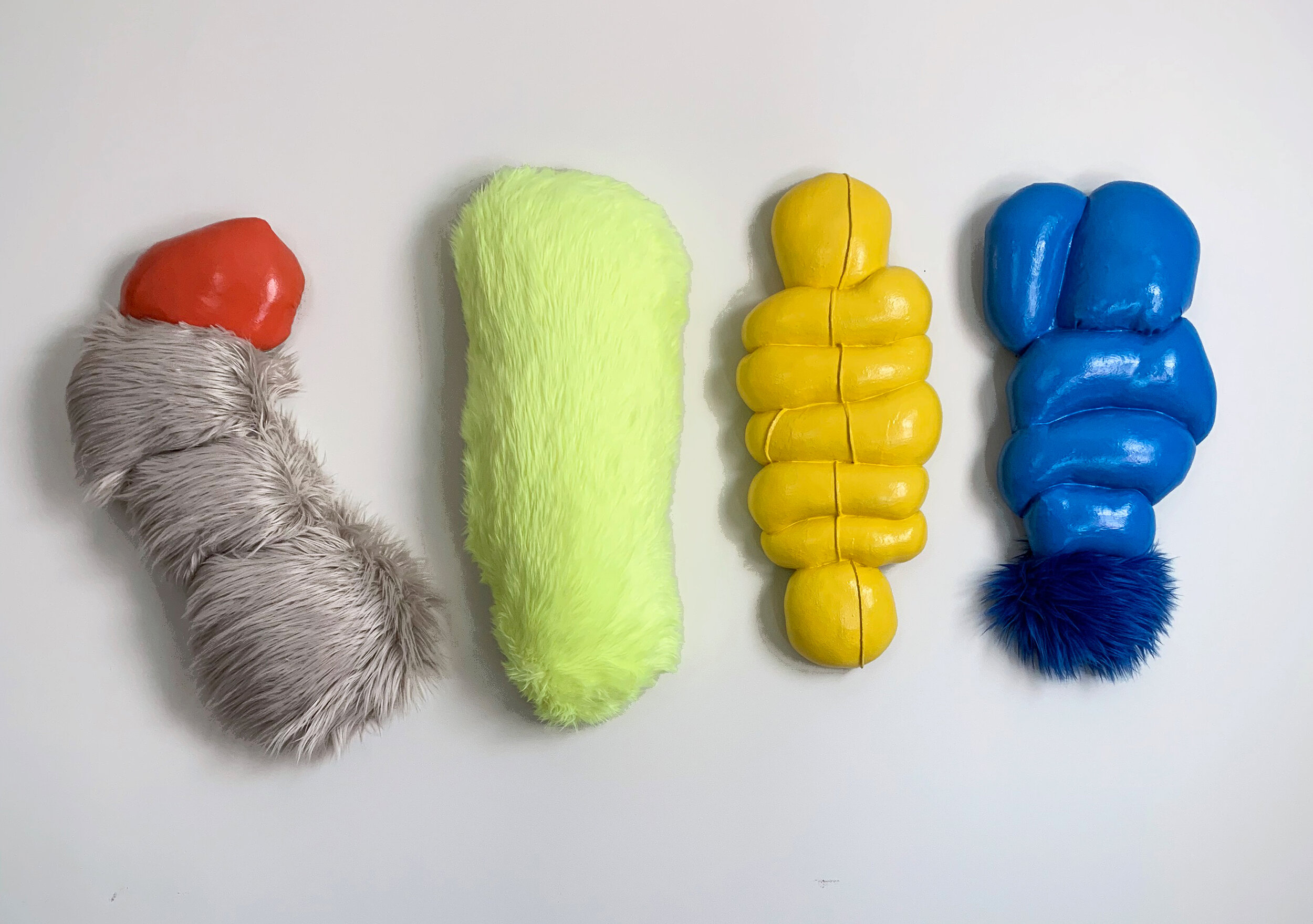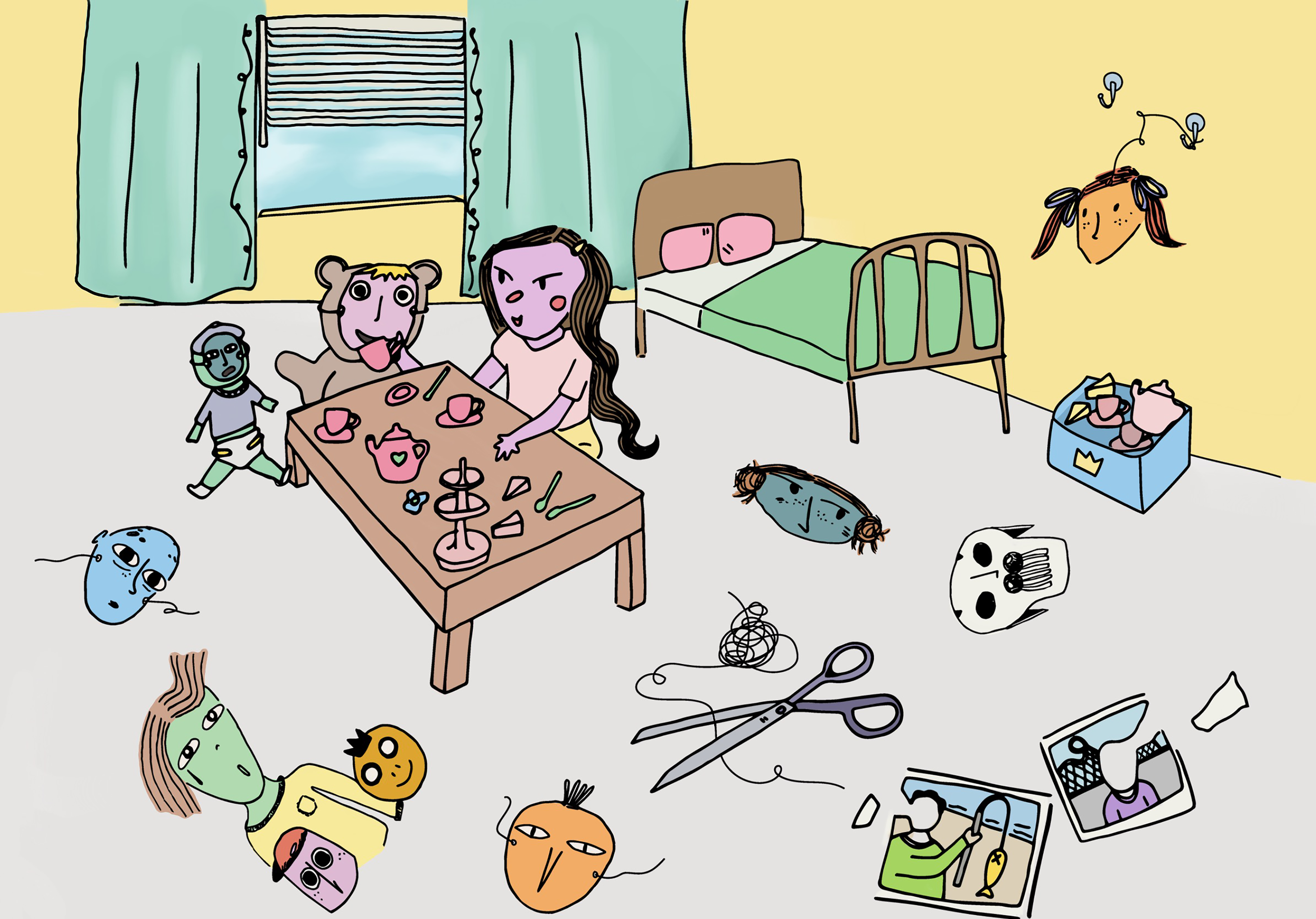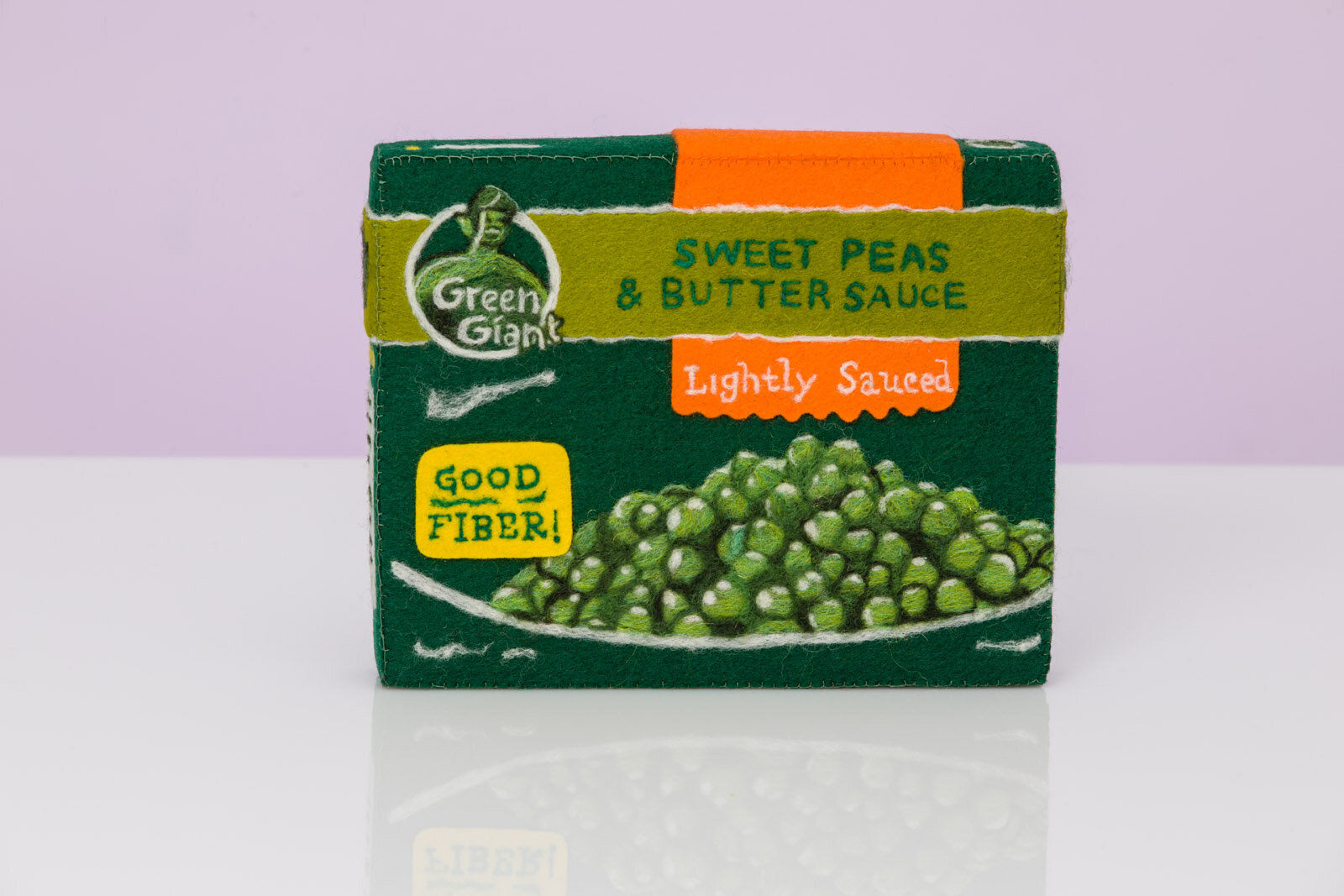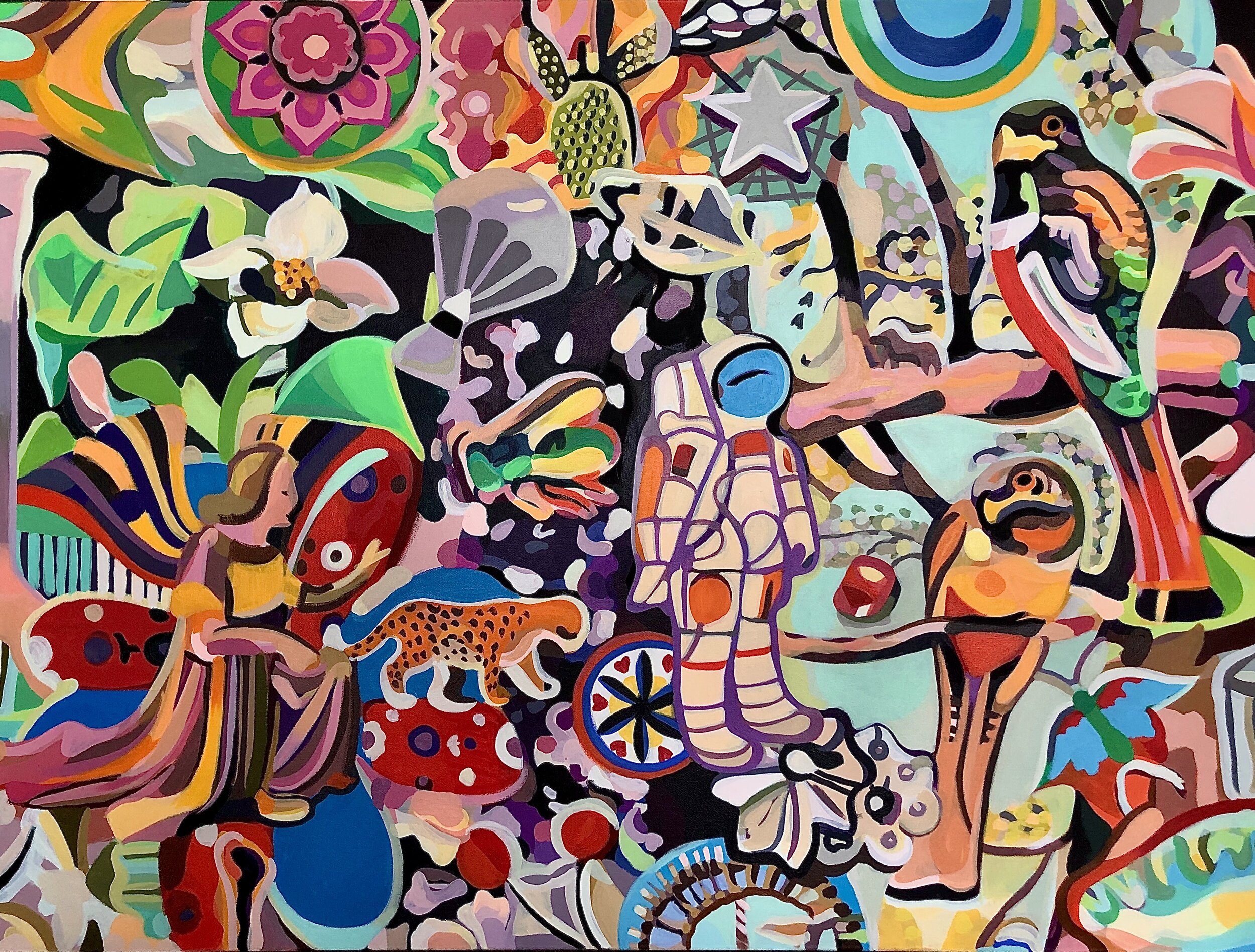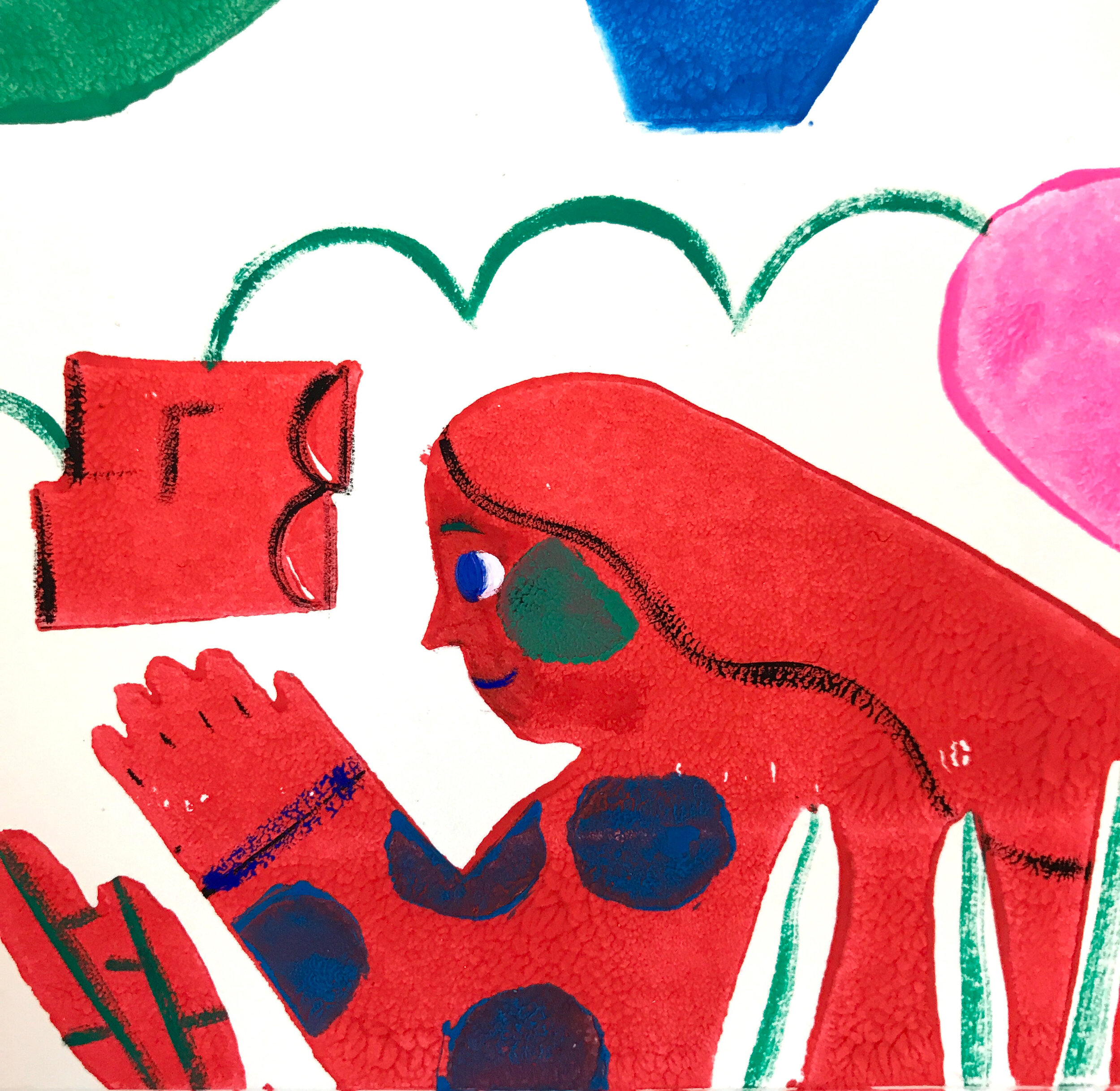Plays Well with Others features national and local artists who create work that engages with play and toys in interactive, mischievous, and subversive ways. The exhibition includes works of all media that entertain while disrupting the status quo; one could easily enjoy it as a collection of nostalgia and delight, but the artists have skillfully transformed the lighthearted theme of “play” into a critical dialogue of contemporary issues.
The Plays Well with Others artists articulate broad concepts centered around play using media ranging from animation to inflatable sculpture to beading. Other Selves offers a glimpse into the mind and studio of Amelia Briggs, who creates glossy, fluffy, and over-puffed replicas of ambiguous childhood objects that are at once comforting and strange. Each one begs its viewer to liberate it from the wall so it may come to life as a cuddly sidekick on an adventure to a dark cave or an abandoned house. Breana Ferrara similarly transports us to childhood with her oversized Birthing Purses, intentionally exaggerated in scale and weight to skew our perspectives back to our smaller selves. Ferrara reimagines a favorite childhood toy – an elephant that would “birth” smaller versions of itself through a Velcro belly pouch; its oversimplified and tidy representation of reproduction endorsed a patriarchal narrative of inevitable and happy motherhood often marketed to young girls. Recreating the toy through her adult perspective has allowed Ferrara to explore the complex and messy reality of deciding whether or not to parent.
Whitney Hackett’s painting Dinosaur in Landscape reveals her whimsical world view and savvy use of color. Collectables catalogues a spectrum of flora, fauna, rocks, and minerals, evoking a children’s science book and reminding us of the moment of first discovery. Her exuberant compositions in Toy Box, Wonderland, and Time Travel are like opening a toy chest – you can’t help but smile as your eyes bounce across the canvas and inevitably discover a reminiscent object. The paintings act as an enshrinement of a uniquely American overabundance, a theme furthered explored by fiber artist LeBrie Rich. Rich lovingly renders Americana pantry staples and snacks like Hungry Man Beef TV Dinner, M&Ms, and Arm & Hammer Baking Soda in wool felt with a slow meticulousness that couldn’t be further from their real-world production, distribution, consumption, and disposal. She simultaneously delights us with their tactility and accuracy, while critiquing our sentimental attachments to their commercial branding. Rich asks us to slow down, and reevaluate our habits.
Asser Saint-Val slows his audience as well, drawing us into a meditative trance with his inflatable sculpture MOURSHI-GFALY. The work is thoroughly enticing in photo and video, but can only be fully experienced in person. Its weightless mass, in perpetual motion, breathes the air of the room and everyone in it. Saint-Val’s work centers on Neuromelanin, a pigment found in the human brain described by the late Dr. Richard King as, “the biological doorway through which the life force of African spirituality passes in moving from the spirit to the material realm.” The sensory experience of MOURSHI-GFALY connects the individual viewer to a universal consciousness that unites all human life, engaging us in a more contemplative kind of play.
Alexander Martin invites us to play with the very constructs of human identity with their interactive sculpture, Make-UP! As broad and far-reaching as a child’s imagination can be, society is often quick to stifle and contain gender exploration. Martin invokes the comic book trope of superheroes preparing for battle by transforming through sensational costuming; they use this trope as a metaphor for their own transformation as a drag performer, a persona that allows a full expression of their femininity. Their sculpture and accompanying video invite us into a safe space to explore identity through expression, a critical form of play Martin engages in throughout daily life as a non-binary person.
Chloe Lewis similarly takes on children’s play as an allegory of self-discovery in her piece Exploring. Her predilection for zines is evident in the narrative structure of a young girl building resilience through life’s many choices and challenges. Lewis’s pared-down color palette and simple graphic forms recall the directness of the youthful mind and connect us to our most primitive emotions. Isabella Baquerizo tapped into the memories of her friends and family to discover how the imaginary games they played as children have informed who they are today. Through an anonymous online submission form, Baquerizo solicited a collection of odd, amusing, and revealing narratives, which are told in the works’ titles, such as, When I was a kid I pretended I was a mermaid and dove into my mom’s bathtub with no water inside it and broke my collarbone. Reimagining the stories through digital illustrations and animations, Baquerizo brings each quirky fictional world to life. The drawings are a playful respite from the dark realities of our current moment in history, but should serve as an urgent reminder that every child deserves to dream freely toward the future.
This exhibition is generously funded through the City of Fort Myers Arts and Culture Grant program.
